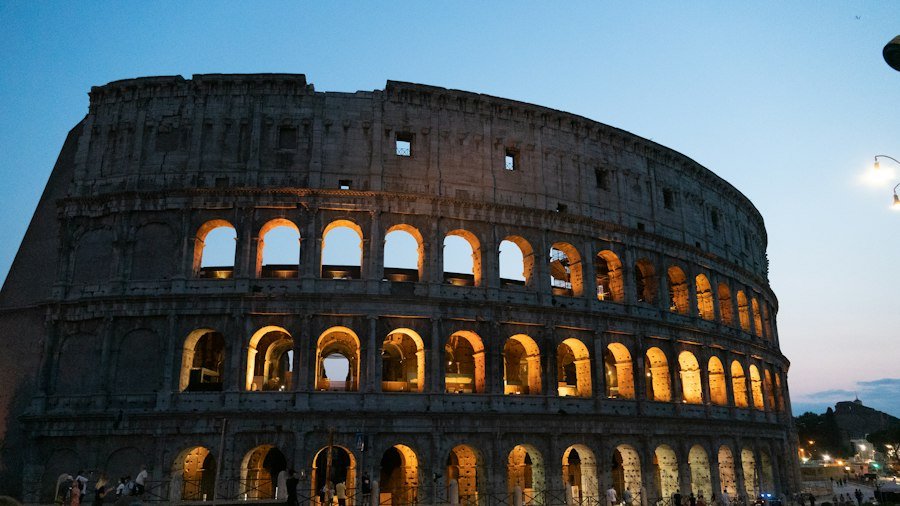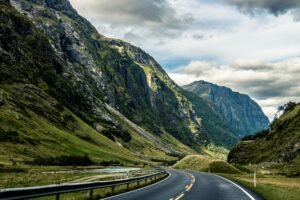

Exploring Italy: Geography and Landmarks Vocabulary
Italy, located in Southern Europe, is a country known for its rich history, stunning landscapes, and iconic landmarks. Its geography has played a significant role in shaping its history and culture. Italy is bordered by France, Switzerland, Austria, and Slovenia, and is surrounded by the Mediterranean Sea. The country is divided into 20 regions, each with its own distinct characteristics and attractions.
When it comes to landmarks, Italy is home to some of the most famous in the world. From the ancient ruins of Rome to the picturesque canals of Venice, there is something for everyone to explore and admire. The Colosseum, the Leaning Tower of Pisa, and the Vatican City are just a few examples of the iconic landmarks that draw millions of tourists to Italy each year.
Table of Contents
ToggleThe Regions of Italy and Their Unique Features
Italy is divided into 20 regions, each with its own unique features and attractions. From the rolling hills of Tuscany to the rugged coastline of Sicily, there is something for every type of traveler in Italy.
One of the most popular regions for tourists is Tuscany. Known for its picturesque landscapes, medieval towns, and world-renowned vineyards, Tuscany offers a true taste of Italian culture. Visitors can explore the historic city of Florence, visit the leaning tower of Pisa, or relax in the charming hilltop town of San Gimignano.
Another popular region is Sicily, located off the southern tip of Italy. With its stunning beaches, ancient ruins, and delicious cuisine, Sicily offers a unique blend of history and natural beauty. Visitors can explore the ancient Greek temples in Agrigento, hike up Mount Etna – Europe’s largest active volcano – or relax on the beautiful beaches of Taormina.
The Mountain Ranges of Italy and Their Significance
Italy is home to several mountain ranges, which have played a significant role in Italian culture and history. The Alps, located in the northern part of the country, are the highest and most extensive mountain range in Europe. They offer breathtaking views, world-class skiing, and opportunities for hiking and mountaineering.
One of the most famous peaks in the Alps is Monte Bianco, also known as Mont Blanc. Standing at 4,810 meters, it is the highest peak in Western Europe. It attracts climbers from all over the world who come to challenge themselves on its steep slopes.
In addition to the Alps, Italy is also home to the Apennine Mountains, which run the length of the country from north to south. The Apennines offer stunning landscapes, charming hilltop towns, and opportunities for outdoor activities such as hiking and skiing.
The Coasts of Italy: Beaches, Cliffs, and Islands
Italy’s coastline is diverse and offers a range of landscapes, from sandy beaches to dramatic cliffs and picturesque islands. The Amalfi Coast, located in southern Italy, is one of the most famous and beautiful coastlines in the world. With its colorful cliffside villages, crystal-clear waters, and stunning views, it is a must-visit destination for any traveler.
Another popular coastal destination is the Cinque Terre, a collection of five colorful fishing villages perched on cliffs overlooking the Ligurian Sea. Visitors can hike between the villages along scenic trails or take a boat ride to admire the coastline from the water.
Italy is also home to several beautiful islands, including Sardinia and Sicily. Sardinia offers pristine beaches with turquoise waters, while Sicily boasts stunning volcanic landscapes and ancient ruins.
Famous Landmarks in Italy: From the Colosseum to the Leaning Tower of Pisa
Italy is home to some of the most famous landmarks in the world. One of the most iconic is the Colosseum in Rome. Built in the 1st century AD, it was the largest amphitheater ever built and could hold up to 50,000 spectators. Today, visitors can explore the ruins and learn about the gladiatorial games that took place there.
Another famous landmark is the Leaning Tower of Pisa. Located in the city of Pisa, this bell tower is known for its distinctive tilt. Visitors can climb to the top for panoramic views of the city and take the obligatory “holding up the tower” photo.
The Vatican City, located within Rome, is another must-visit landmark. It is the smallest independent state in the world and is home to St. Peter’s Basilica and the Sistine Chapel, which houses Michelangelo’s famous frescoes.
Italian Vocabulary for Describing Landscapes and Landmarks

When visiting Italy, it can be helpful to know some basic Italian vocabulary for describing landscapes and landmarks. Here are a few words to get you started:
– Montagna (mountain)
– Collina (hill)
– Spiaggia (beach)
– Mare (sea)
– Isola (island)
– Paesaggio (landscape)
– Monumento (monument)
– Chiesa (church)
– Piazza (square)
– Ponte (bridge)
For example, if you want to describe a beautiful mountain in Italian, you could say “La montagna è bellissima” (The mountain is beautiful). Or if you want to ask for directions to a famous landmark, you could say “Dov’è il Colosseo?” (Where is the Colosseum?).
Italian Vocabulary for Navigating Cities and Towns
When navigating cities and towns in Italy, it can be helpful to know some basic Italian vocabulary. Here are a few words to help you get around:
– Strada (street)
– Via (road)
– Piazza (square)
– Vicolo (alley)
– Chiesa (church)
– Stazione (train station)
– Aeroporto (airport)
– Ristorante (restaurant)
– Banca (bank)
– Farmacia (pharmacy)
For example, if you want to ask for directions to a restaurant, you could say “Mi scusi, dov’è un ristorante?” (Excuse me, where is a restaurant?). Or if you need to find a pharmacy, you could ask “Dov’è la farmacia più vicina?” (Where is the nearest pharmacy?).
Learning Italian for Traveling in Italy: Tips and Resources
Learning some basic Italian before traveling to Italy can greatly enhance your travel experience. Not only will it make it easier to navigate and communicate with locals, but it will also show respect for the local culture. Here are some tips for learning Italian before your trip:
1. Start with the basics: Begin by learning some basic vocabulary and phrases that will be useful during your trip. Focus on greetings, numbers, directions, and common phrases.
2. Practice speaking: Find opportunities to practice speaking Italian, whether it’s with a language partner, a tutor, or through language exchange programs. Speaking the language will help you become more comfortable and confident.
3. Immerse yourself in the language: Surround yourself with Italian as much as possible. Listen to Italian music, watch Italian movies or TV shows, and try to read books or articles in Italian.
4. Take a language course: Consider taking a formal language course before your trip. This can provide structure and guidance as you learn the language.
5. Use language learning apps: There are many language learning apps available that can help you learn Italian on the go. Duolingo, Babbel, and Rosetta Stone are popular options.
Taking an Italian Course to Enhance Your Travel Experience
Taking an Italian course before traveling to Italy can greatly enhance your travel experience. Not only will it help you communicate with locals and navigate the country more easily, but it will also give you a deeper understanding and appreciation of Italian culture. Here are some popular Italian language schools and courses:
1. Scuola Leonardo da Vinci: With locations in Florence, Milan, Rome, and Siena, Scuola Leonardo da Vinci offers a range of Italian courses for all levels. They also offer cultural activities and excursions to help students immerse themselves in Italian culture.
2. Istituto Dante Alighieri: Located in Florence, Istituto Dante Alighieri offers intensive Italian courses for all levels. They also offer specialized courses in art history, cooking, and fashion.
3. Online courses: If you prefer to learn Italian from the comfort of your own home, there are many online courses available. Babbel, Rosetta Stone, and iTalki are popular options.
Taking an Italian course before your trip can give you the confidence to communicate with locals, order food at restaurants, and navigate public transportation. It can also provide a deeper understanding of Italian culture and history.
Exploring Italy: A Language and Cultural Immersion Experience
Immersing yourself in Italian language and culture while traveling in Italy can be a transformative experience. It allows you to connect with locals on a deeper level, gain a better understanding of the country’s history and traditions, and create lasting memories.
Here are some tips for getting the most out of a language and cultural immersion experience in Italy:
1. Stay with a local host: Consider staying with a local host through platforms like Airbnb or Couchsurfing. This will give you the opportunity to practice your Italian skills and learn about the local culture from someone who knows it best.
2. Take part in cultural activities: Look for opportunities to take part in cultural activities such as cooking classes, wine tastings, or traditional festivals. This will give you a firsthand experience of Italian culture and traditions.
3. Practice speaking Italian: Don’t be afraid to practice speaking Italian with locals. Even if you make mistakes, most Italians appreciate the effort and will be happy to help you improve.
4. Explore off the beaten path: While the famous landmarks and cities are worth visiting, don’t forget to explore off the beaten path. Visit small towns, rural areas, and lesser-known regions to get a more authentic experience of Italy.
5. Immerse yourself in the local cuisine: Food is an integral part of Italian culture, so make sure to immerse yourself in the local cuisine. Try regional specialties, visit local markets, and take part in cooking classes to learn how to make traditional Italian dishes.
By immersing yourself in Italian language and culture while traveling in Italy, you can create a truly memorable and enriching experience. Whether it’s exploring famous landmarks, navigating charming towns, or simply enjoying a meal at a local trattoria, Italy offers something for everyone.
If you’re interested in learning more about Norwegian language and culture, you might enjoy this article on Exploring Norwegian Culture: Vocabulary Related to Traditions and Festivals. It provides insights into the rich traditions and celebrations that are an integral part of Norwegian society. From Syttende Mai (Norwegian Constitution Day) to Christmas traditions, this article offers a fascinating glimpse into the cultural fabric of Norway. Whether you’re planning a trip to Norway or simply want to expand your knowledge of Norwegian customs, this article is a great resource.
FAQs
What is the geography of Italy?
Italy is a country located in Southern Europe, bordered by the Mediterranean Sea to the south, the Adriatic Sea to the east, and the Alps to the north. It has a varied landscape, including mountains, hills, plains, and coastlines.
What are some famous landmarks in Italy?
Italy is home to many famous landmarks, including the Colosseum and the Roman Forum in Rome, the Leaning Tower of Pisa, the canals of Venice, the Duomo in Florence, and the ruins of Pompeii.
What is the capital city of Italy?
The capital city of Italy is Rome, which is also the largest city in the country. It is home to many famous landmarks and attractions, including the Colosseum, the Vatican City, and the Trevi Fountain.
What are some other major cities in Italy?
Other major cities in Italy include Milan, Naples, Turin, Florence, Bologna, and Venice. Each city has its own unique culture, history, and landmarks.
What is the official language of Italy?
The official language of Italy is Italian, which is spoken by the majority of the population. However, there are also many regional dialects and languages spoken throughout the country.
What is the currency used in Italy?
The currency used in Italy is the Euro, which is also used in many other countries throughout Europe. It is divided into 100 cents and comes in coins and banknotes of various denominations.
If you want to learn Norwegian, you can register for classes here. We look forward to hearing from you and helping you become fluent in Norwegian.






